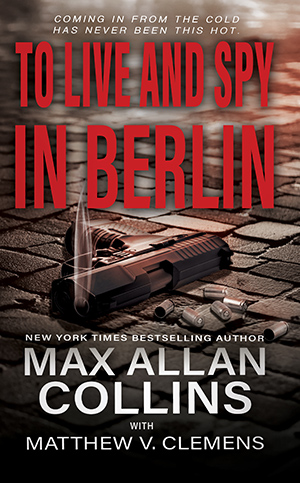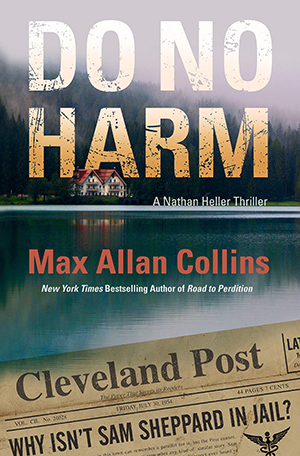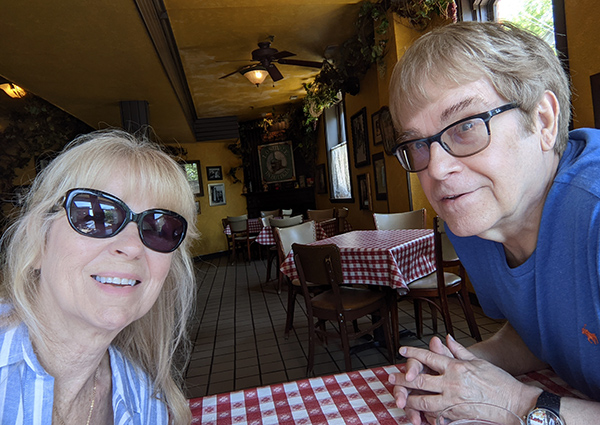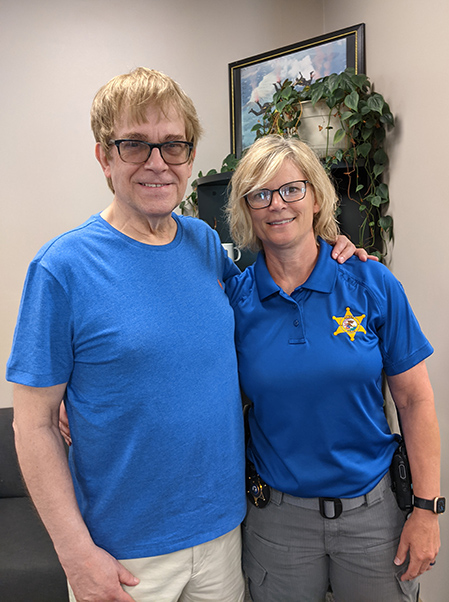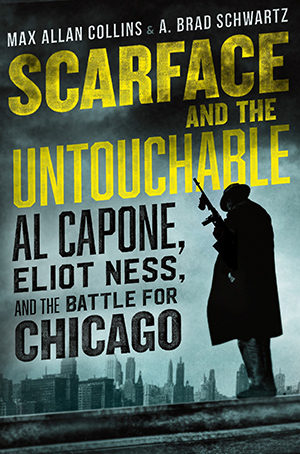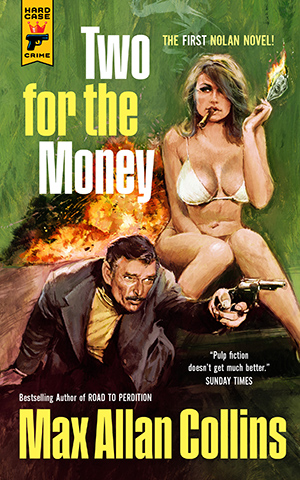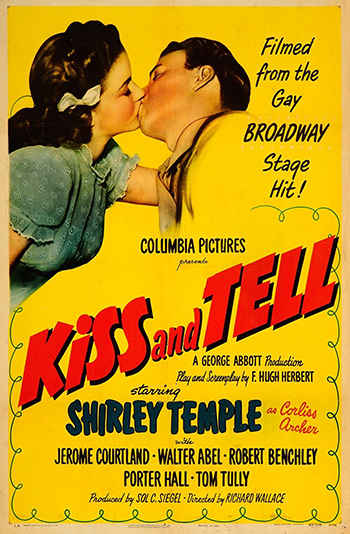I hear from a lot of readers that they have trouble keeping up with my output. Well, sometimes I have trouble, too – Double Down, the second of the Nolan reprint series from Hard Case Crime (two novels to a book), came out June 8! So, better late than never, ten copies are available in exchange for the promise of a review at Amazon and/or other outlets, including blogs. As usual, if you hate the book you are absolved of your obligation.
Write me at macphilms@hotmail.com. USA only. You must include your full snail-mail address (including name with address to make it easy on me copying it) even if you’ve won books before in these giveaways.
Let’s discuss my rate of output. For one thing, Double Down is two books I wrote decades ago, so you can’t hold that against me. And I don’t mean to sound morbid here, but you may have noticed I’m not as young as I used to be, which means I have an increasingly finite amount of time ahead of me to get my stories told. Yes, this is about making a living, but right now it’s more about getting the work done. And when I’m dead, my output will significantly decrease, and you will have plenty of time to catch up.
To Live and Spy in Berlin by Matt Clemens and me – the third John Sand novel – will be out July 14, but you can order it now. We think the cover is splendid. Will there be more John Sand books? That’s up to you. We have left something of an incredible effing cliffhanger that needs resolving, so it’s on your conscience not ours if sales don’t justify that resolution.
It’s frustrating to hear how many people assume these novels are spoofs (without reading them, of course), though it may be our fault for the tongue-in-cheek titles (Come Spy With Me; Live Fast, Spy Hard). And I provided the tagline, “A Marriage License to Kill.” But we are in the very hardboiled tradition of the original Bond novels and the first four Sean Connery films. Matt and I feel the third John Sand is the best of the bunch.
I have just completed – sent the manuscript to Wolfpack editor Paul Bishop minutes before beginning this update – a novel called The Menace by Mickey Spillane and me. It’s a horror novel based on an unproduced Spillane screenplay. I am hopeful it will do well enough to justify a novel version of another unproduced screenplay of Mickey’s, The Green Woman. If that happens, it will mean all three unproduced screenplays in the Spillane files will have become novels (the first was The Saga of Cali York, which became The Legend of Caleb York).
In the pleasant wake of being named a recipient of the Faust, the Grand Master award from the International Association of Media and Tie-in Writers, I had an interesting revelation about writing novelizations of film scripts. I think I already knew this instinctively, but with The Menace I realized that my approach to turning the script into a novel was very much the same as a director turning a script into a film.
The Menace will likely not be out from Wolfpack till 2022, since I wrote it as part of the celebration of the 75th anniversary of Mike Hammer’s first appearance in I, the Jury (1947). So I’ll be talking about it more, later.
The nice response the Nolan reprints have been getting brings to mind how Nolan – and frankly my professional life as a writer – began. Specifically, it was with the film Point Blank, based on Richard’s Stark’s novel The Hunter and directed by John Boorman. Stark, of course, was Donald E. Westlake, but it would be a while before I knew that.
This was 1967 and it seemed like one film after another was hitting me hard, and changing many ideas I had about storytelling. Looking back, I’d have to say ‘67 was the best year the movies ever had, or it sure seemed that way when every weekend one or more of the following might happen: The Graduate, Bonnie and Clyde, You Only Live Twice, The Producers, Bedazzled, How to Succeed in Business Without Really Trying, and The President’s Analyst. Not to mention (well, hell, let’s mention them) The Dirty Dozen, Tati’s Playtime, In the Heat of the Night, Coolhand Luke, Billion Dollar Brain, Hour of the Gun and Elvis in Clambake. Well, maybe not Elvis in Clambake….
Point Blank, as a modern, hard-edged, nearly surrealistic crime film, hit me harder than any (with the possible exception of Bonnie and Clyde). Barb and I saw it at a drive-in. I was still living at my parents’ house and remember vividly going out after dropping Barb off her at her parent’s place and buying Point Blank at an all-night supermarket. I remembered having seen the book there, reprinted by Gold Medal (title-changing The Hunter to Point Blank) as part of a reprint program of the Richard Stark “Parker” novels with covers by Robert McGinnis.
I’d already been reading and loving the Ennis Willie “Sand” novels, which had a similar premise, and within days I had started writing Mourn the Living, the first Nolan novel (although his name initially was Cord).
What I got from the film Point Blank was the modern gloss that could be put on the tough guy novels born of the ‘30s, ‘40s and ‘50s that had so consumed me as a young reader. What I got from Richard Stark’s Point Blank (and the other Parker novels) was a third-person approach that taught me strict point of view and interesting ways to shift time.
Without that film (and the book the film led me to) I would not be the writer I am today. I was so entrenched in Spillane technique – which was tied to the 1950s – that it was vital that John Boorman and Richard Stark drag me into the present.
Which, of course, was 1967.
And what ultimately separated me from Richard Stark was my young age and the world I was living in – soon I would be married and going to the University of Iowa on the Iowa City campus, in a world of hippies and rock ‘n’ roll that entered a bemused Nolan’s world immediately, and made me not just a throwback but somebody writing about his new world in an old established way.
I am always fascinated and impressed and even a little overwhelmed by things like this. Like what? Like buying a paperback of Point Blank with a Robert McGinnis cover, and a couple years later creating Quarry, the child Richard Stark and Mickey Spillane bore that came from my loins (ouch!), a character who would appear in two centuries in books of mine with Robert McGinnis covers.
I am a lucky bastard.
Not rich, not quite famous, but damn lucky.
Speaking of Double Down and Nolan, here is a review/essay from Book Reporter that is so good I might written it myself…or maybe held a gun to the reviewer’s head as encouragement.
The terrific Borg site writes up the best books of the decade, and names Mike Hammer as Best Retro Novel Series (New/Ongoing). The brief write-up is glowing and wonderful.
Finally, here’s another short but fun reaction to Double Down and Nolan.
M.A.C.











